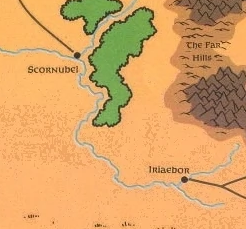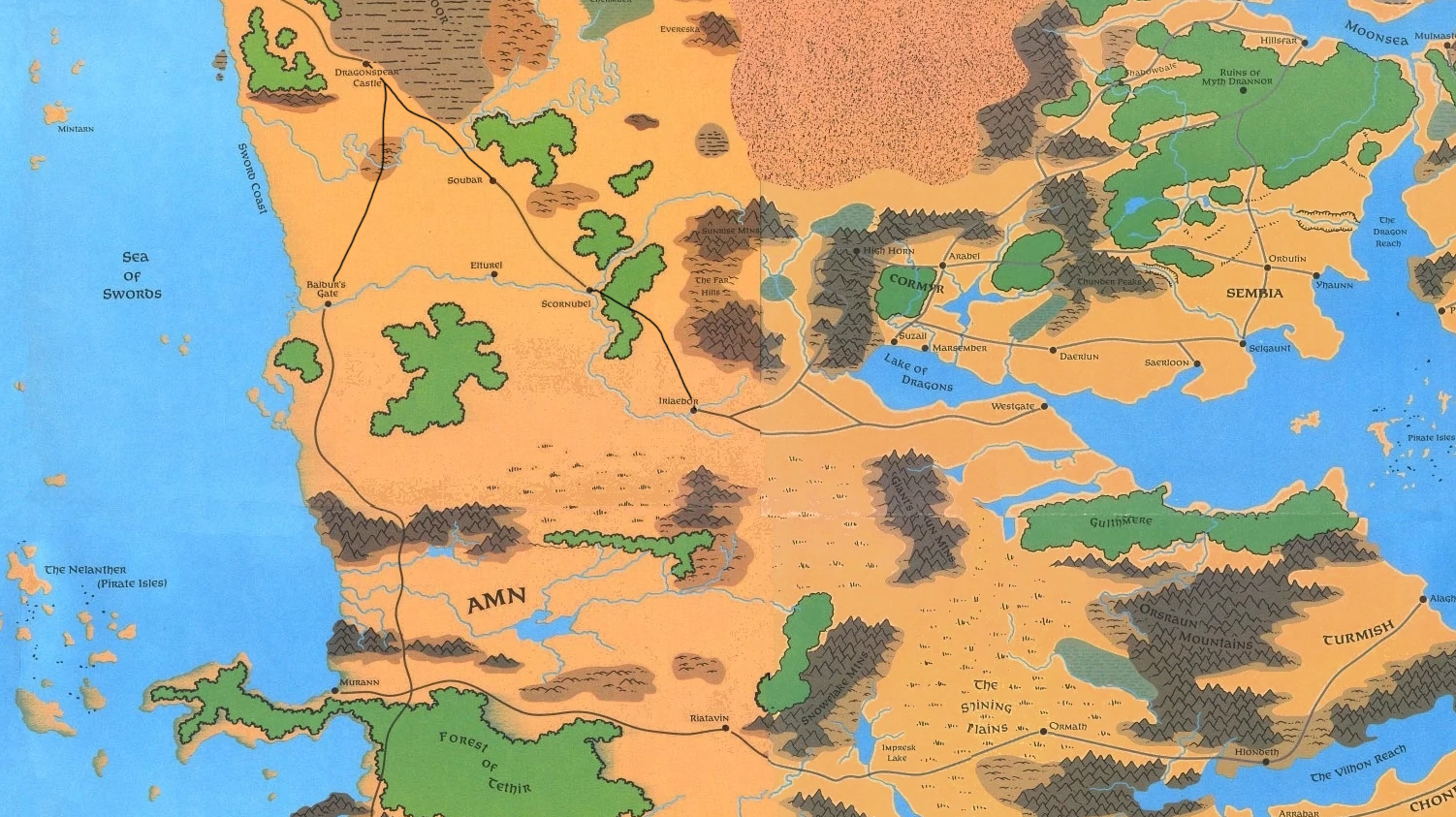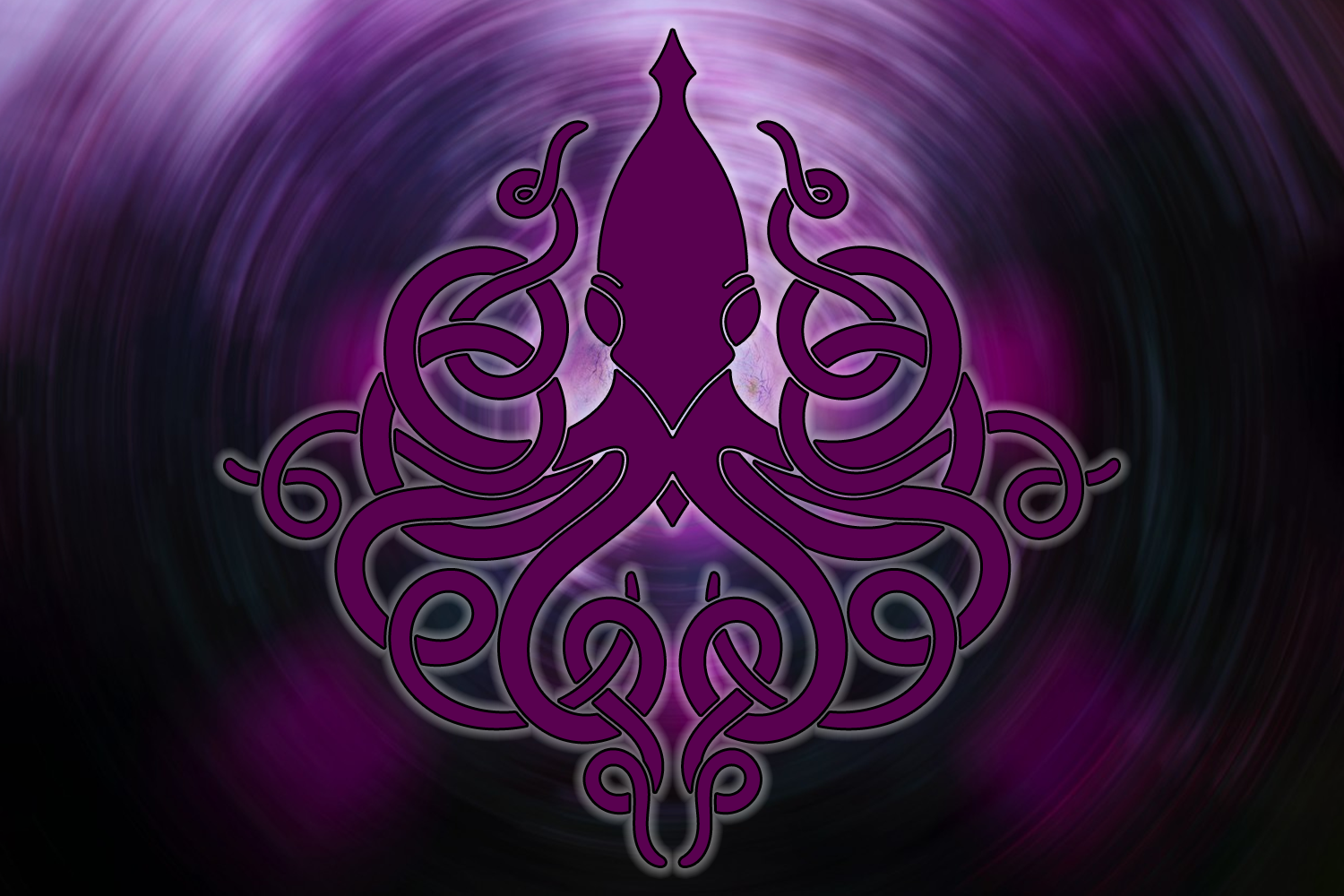
The agents of the so-called Thieves’ Guild of the North, known as krakenar, identify themselves through the secret mark of a purple squid with an incredible number of tentacles. (The number and styling of the tentacles, perhaps encouraged by the decentralized structure of the Society, has actually shifted over time and in different places. This is not an intentional variation, but those who are deeply familiar with the krakenar may be able to identify the origin of a particular instance of their sign.) It would be a mistake, however, to think of the Kraken Society as purely a bunch of thieves. They are skilled spies and information brokers, with their services often being sought even by legitimate powers. The krakenar thus include highwaymen, merchants, adventurers, and more. Anyone with the right skills or in the right place may be welcomed in the tentacles’ embrace.
In fact, the Kraken Society can often abide in these legitimate, mutually beneficial relationships for years. The krakenar refer to this as the “low tide,” getting their foot in the door by selling valuable information, using their newly privileged position to gain access to more information, rinse, wash, repeat.
What the krakenar are looking for is the “crack in the seawall” (which they may refer to in slang simply as a “crack” or “buckling”); a weakness in the existing systems of power which can be exploited. When they find it, the tide comes in.
Operating at “high tide,” a krakenar cell will use all of its illicit knowledge, covert skills, and criminal resources to disrupt the targeted government or organization. They may attempt to destroy the entire institution, but it’s more common for them to target specific individuals. When the leadership has been crippled or wiped out, the krakenar agents who silently infiltrated the organization during low tide simply slip into the power vacuum. It’s not unusual for krakenar agents to enter power promising to end a threat that was created by the Society in the first place, ensuring acclaim as they rapidly “solve” the problem.
ORGANIZATION
The Kraken Society is cell-based. Each city or region is controlled by a Lieutenant, and although the various regional cells cooperate with each other when it’s beneficial, each is operated as an independent organization and has deliberately limited contact. The local structures of the cells are not proscribed, and can vary greatly (although they tend to value secrecy and usually reflect the Society’s general cell-based methodology).
The inner circle of the Society, which consists of the Lieutenants and a handful of other senior members (called Followers), refers to itself as the coterie. The coterie is privy to the inner mysteries of the cult, which feature a highly mythologized “truth” about the Kraken of the Purple Rocks: They believe themselves to be the servitors of the King of the Trackless Depths (Slarkethrel), who is destined to regain the lost hegemony of the kraken empire which once ruled the seas of Toril. Those who advance further into the mystery perform rites which forge a communion (or supposedly do) with the kraken psychopomps who escaped their empire’s destruction within the sanctuaries of the abyssal rifts.
Those becoming Lieutenants travel to the Purple Rocks, where the Heralds of the Deep indoctrinate them through a series of strange rites. Lieutenants who earn great honor may even be invited to Ascarle.
Most krakenar agents, however, are not part of the coterie and just think of themselves as being part of a criminal organization. Even further out on the periphery is the vast web of front organizations which serve the Society’s will without most of their members or employees ever knowing they are part of it.
CURRENT CELLS
Waterdeep/Skullport: The Skum Lord is an aboleth which lairs beneath Skullport. It has quietly spent centuries inexorably expanding its influence within the Port of Shadows, creating a network of telepathically linked agents strategically placed in the nexus of the underworld. Information flows through Skullport, and the Skum Lord skims his take.
Those long-enthralled to the Skum Lord can be noted by their pale, translucent skin. Known by some as the “pale servitors,” they can be seen moving throughout Skullport and, increasingly, the city above. (The Skum Lord used to have a surface counterpart who served as the lieutenant of Waterdeep, but this hasn’t been true in decades. Slarkethrel’s resurgence in recent years has prompted the Skum Lord to become more active in expanding the Society’s presence in Waterdeep. His agents had some success doing business with Lord Neverember’s administration, but have been disappointed by Laeral Silverhand. It’s uncertain whether the Skum Lord wants to expand his base of power, or if he would be happier finding a new Waterdhavian lieutenant.)
In Skullport, the Skum Lord is also rumored to own forty percent or more of the city’s buildings. Each month the pale servitors come to collect their rent: Sometimes they ask for money. Sometimes they ask questions.
Yartar: Yartar was once the primary center of power for the Kraken Society, but in the late 14th century the Harpers and the Waterbaron systematically broke their power and drove them out of the city. The Society has only returned to Yartar within the last few years.
- Ghald (sahuagin) and Unferth (male Tethyrian human priest) are partners jointly in charge of Society business in the Dessarin Valley. Their approach has been to recruit powerful, ambitious individuals who already have existing power bases and simultaneously turn them towards myriad schemes. Their theory is that they can easily jettison the failures and consolidate the victors into a larger organization. The actual organization that Ghald and Unferth have reporting directly to them now can actually be described only generously as skeletal, but they’ve managed to project to most of the people they’re working with the illusion that the Society is a monolithic force. (Princes of the Apocalypse, p. 210)
- Lord Khaspere Drylund, one of Yartar’s nobles, is a member of the society and spearheading an effort to replace Ruthiol as the city’s Waterbaron. Drylund notably owns and operates the Grand Dame, a riverboat gambling casino. (Storm King’s Thunder, p. 216)
The Hand of Yartar is an all-female thieves’ guild in Yartar which was actually founded as a front organization for the Kraken Society. In the 14th century it was led by Semmonemily, a doppelganger who assumed the identity of the Hand’s guildmistress, Emily Iramalac. When the Society was purged from Yartar, however, Semmonemily was killed. The remaining members of the Hand had no idea they’d been operating as part of the Kraken Society and no living connection to the organization. They’ve continued operating independently over the last century, and ironically are now one of the strongest opponents to the Kraken Society as the Society attempts to reassert its control of the underworld in Yartar.
Neverwinter: The Reefkin are a group of merfolk who have set up a commune under Neverwinter Harbor. The upper ranks of the Reefkin deliberately infect themselves with lycanthropy, allowing them to transform into wolves when they wish to pursue shoreside agendas.
The Reefkin have a familiar modus operandi among Slarkethrel’s cults: They rescue drowning sailors and, sometimes after showing them some underwater wonder or vision, deliver them to shore. They claim a life-debt from these sailors, however, and subtly coerce them into the Society.
(Do the Reefkin create their own supply of sailors-to-be-saved by covertly sinking ships with damage disguised to look as if they ran aground on the reefs? Of course they do.)
What happens next depends on circumstances: Some can be immediately forced to do terrible things. Others will be manipulated into countless small acts of treachery, each binding them closer to the Reefkin. The end goal is either recruitment, blackmail, or both.
The Reefkin are also known to have formed alliances with fey powers within Evernight, the dark reflection of Neverwinter which lies within the Shadowfell.
Thornhold: North of Waterdeep along the Sword Coast, Thornhold is an ancient fortress which was unwittingly built by the Margaster noble family directly below the caverns of Clan Stoneshaft in the Underdark below. Control of Thornhold has passed through numerous hands and its connections to the Stoneshaft dwarves have grown stronger (primarily due to a period in which Zhentarim slavers were oppressing and exploiting the dwarves).
Most recently, the Margasters have once again taken possession of Thornhold and forged a tentative alliance with the Stoneshaft dwarves: The Margasters protect the Stoneshaft interests, provide defense against surface threats, and facilitate trade relationships with the merchants of Waterdeep. The Stoneshaft dwarves benefit from having economic access to the wealth of the North; the Margasters reap a healthy profit from their role as middlemen.
There are those among the Stoneshaft dwarves, however, who resent the Margasters: They remember the past betrayals of other surface “allies” and they question what the humans are doing to justify “stealing” their wealth. That’s the sort of buckling that the Kraken Society looks for. A krakenar dwarf named Urnom Telrokak has been organizing disaffected Stoneshaft dwarves. What would be ideal is if the Kraken Society could place an agent within the Margasters, who could then be used to exacerbate the tensions between the two factions.
Caer Westphal: Caer Westphal is the capital of Snowdon, a small isle in the southeastern corner of the Moonshaes which was recently annexed by Amnian nobles. The Society has implanted itself among the native Ffolk of the island, characterizing themselves as a popular uprising.
They have an uneasy alliance with the Brothers of the Beast, another resistance group run by a druid named Heinrich Mucklepratt who can summon strange allies from the island’s moonwells. Their mutual efforts have forced Lady Erliza to openly reveal more and more of her dark powers, increasing tensions on the island.
Luskan: The City of Sails is worth mentioning here because, like Yartar, it was once a major center of power for the Kraken Society. The regional lieutenant here was actually a member of the High Captains who ruled the city, often turning Luskan’s extensive resources to the Society’s purposes. As in Yartar, however, the Society was purged in the late 14th century. Recent efforts have attempted to find a toehold here, but so far Jarlaxle Baenre and the Bregan D’aerthe have been successful in stamping them out.

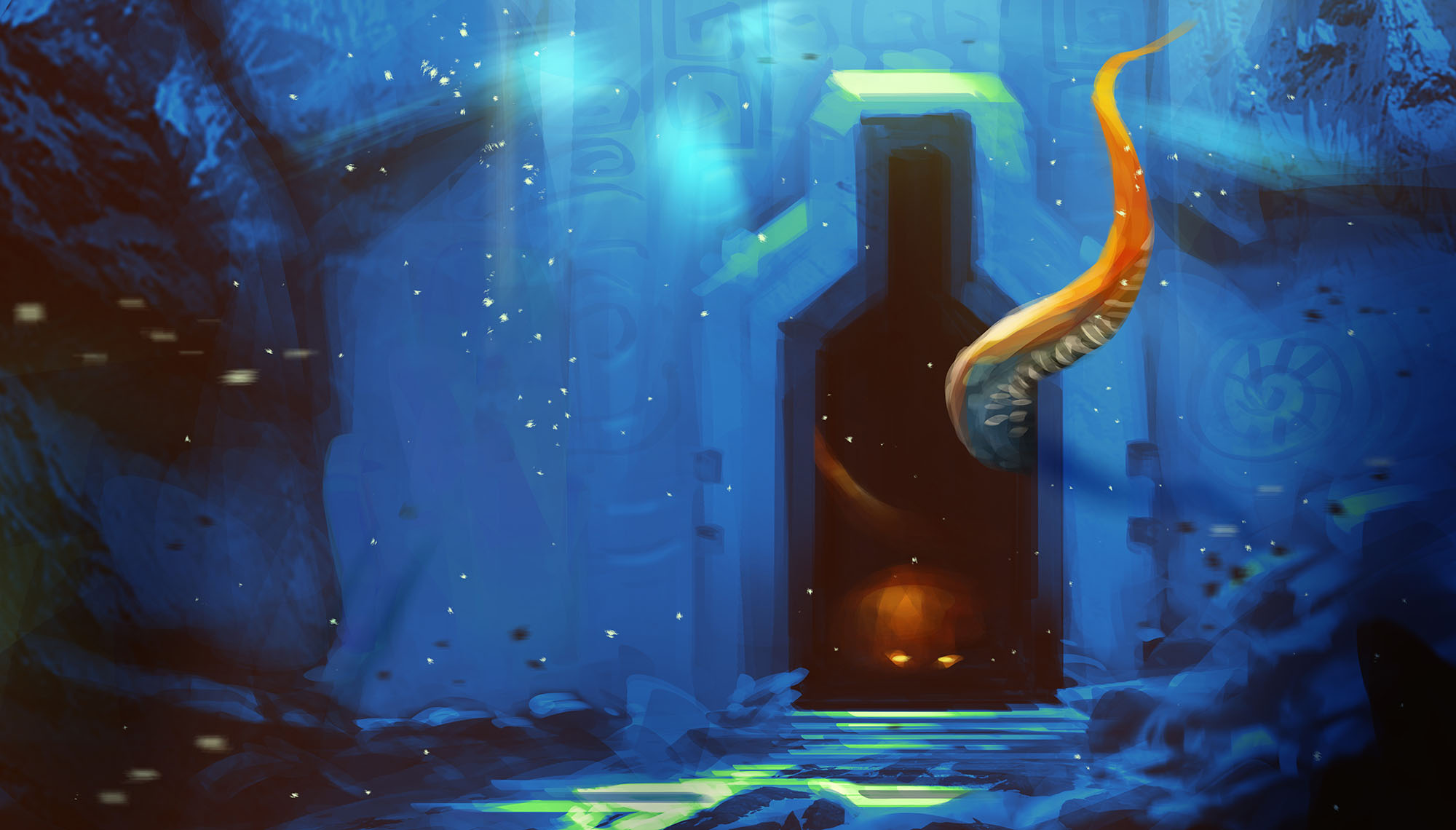
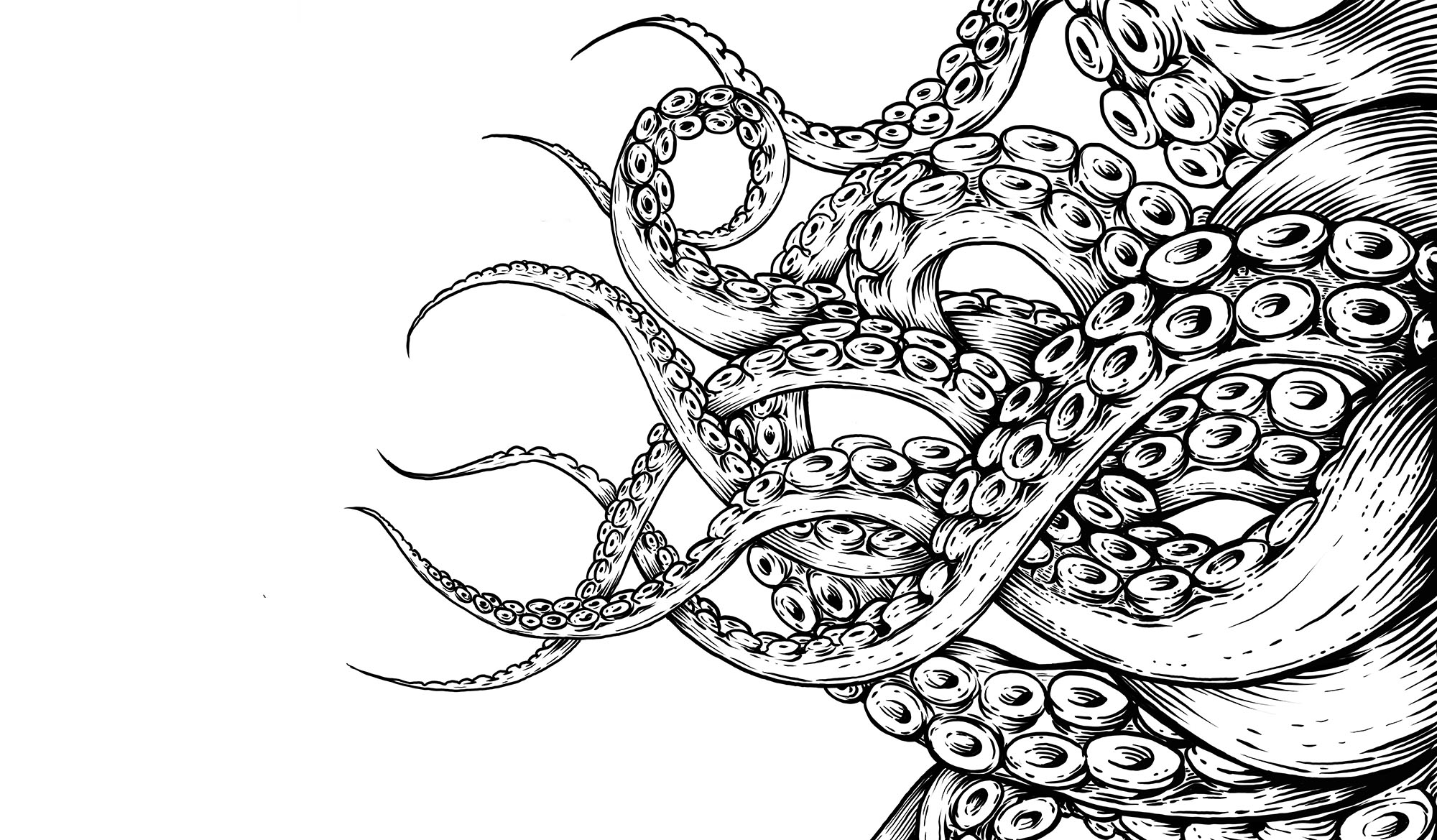
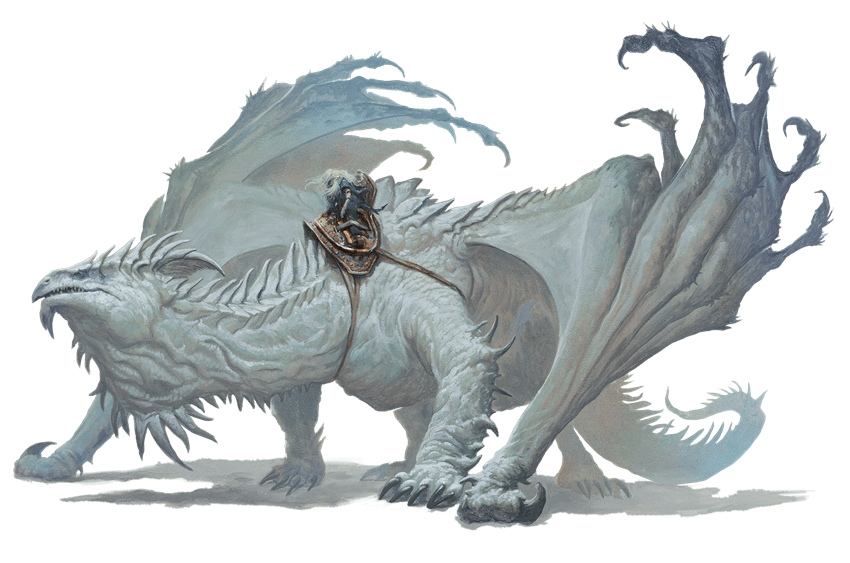
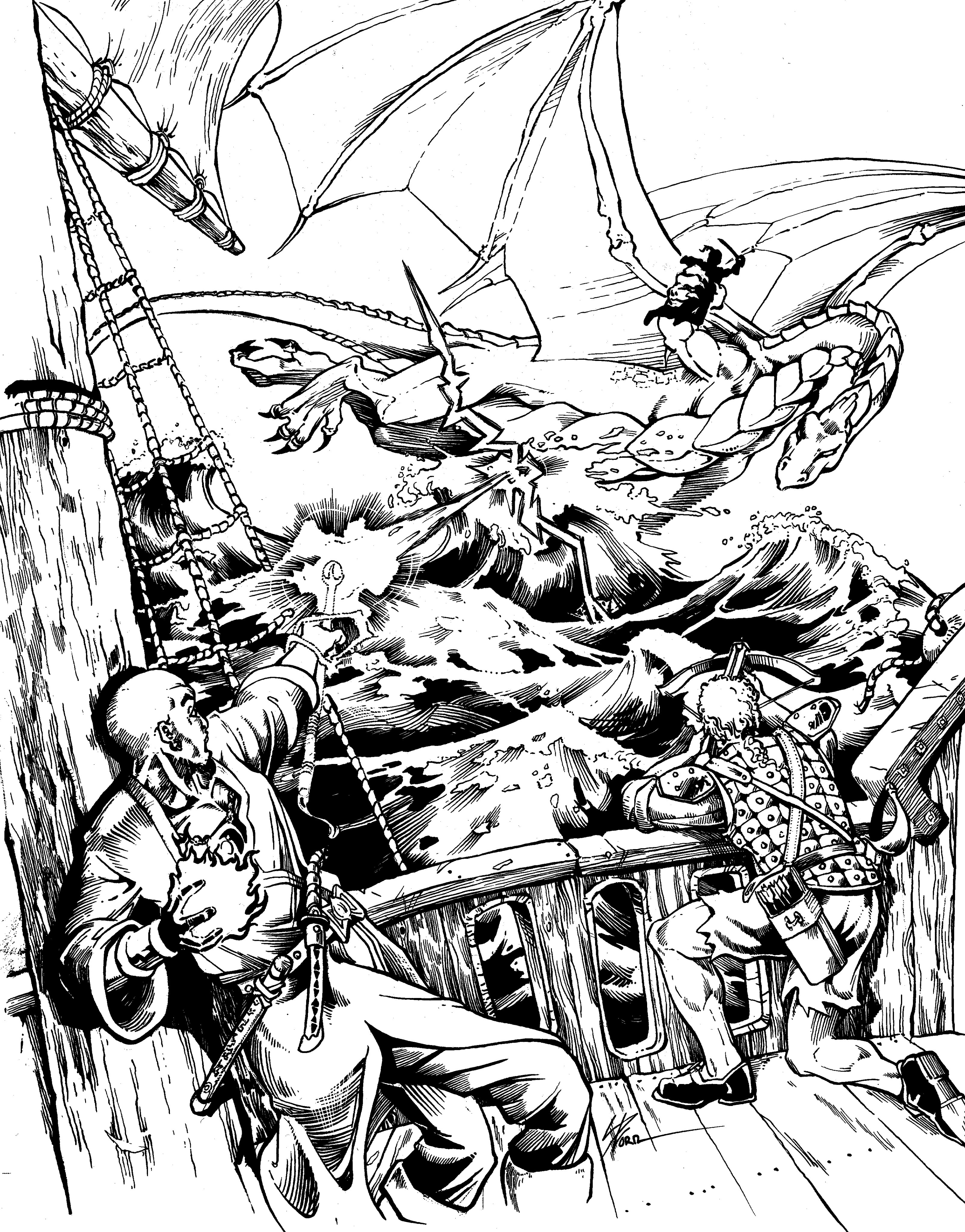
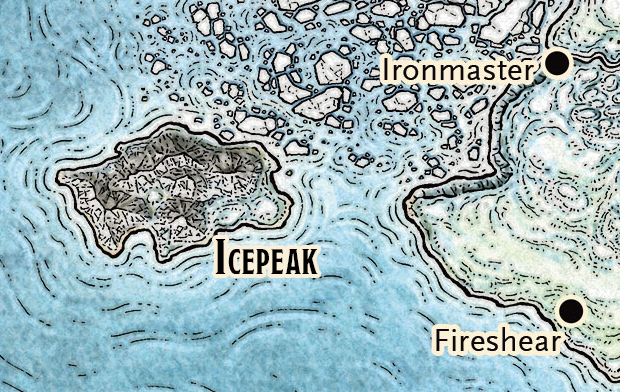
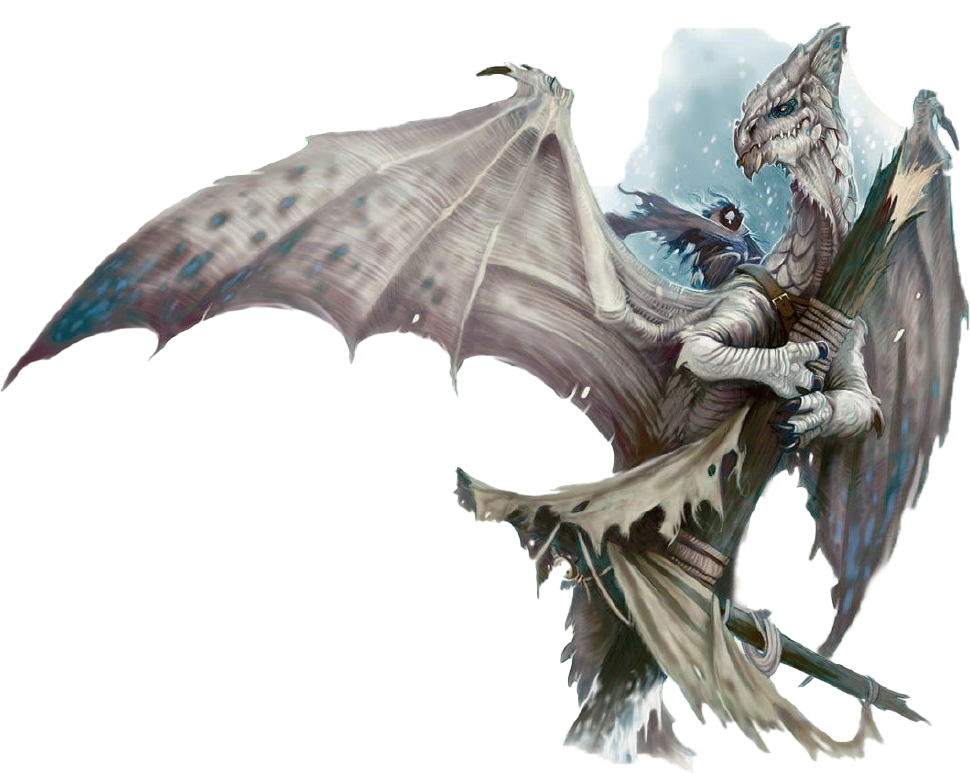
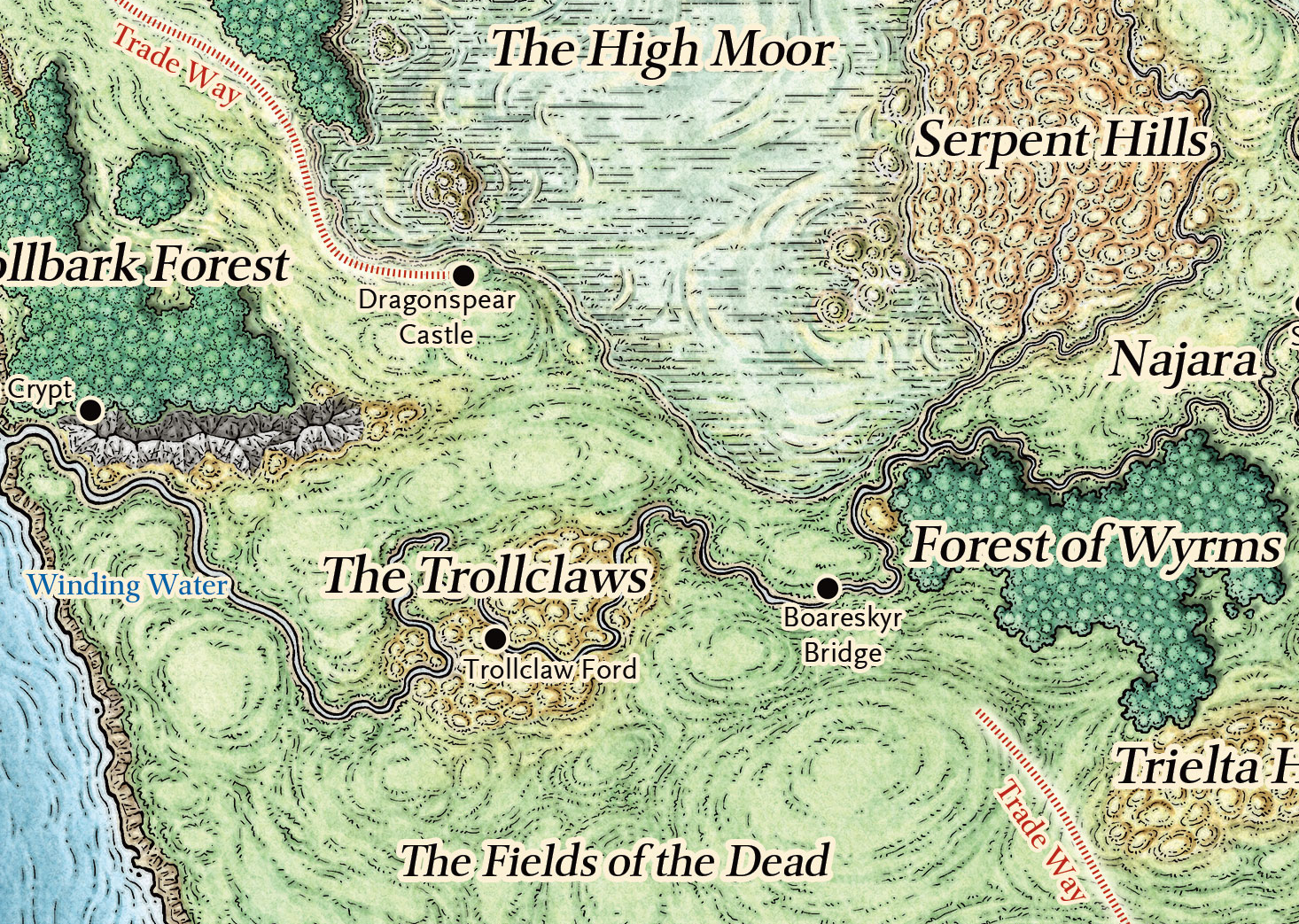
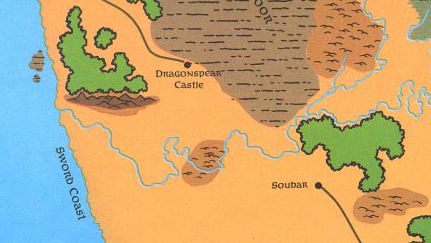
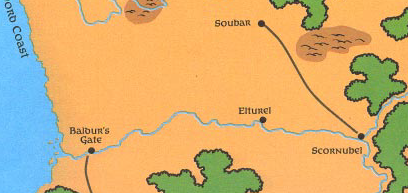
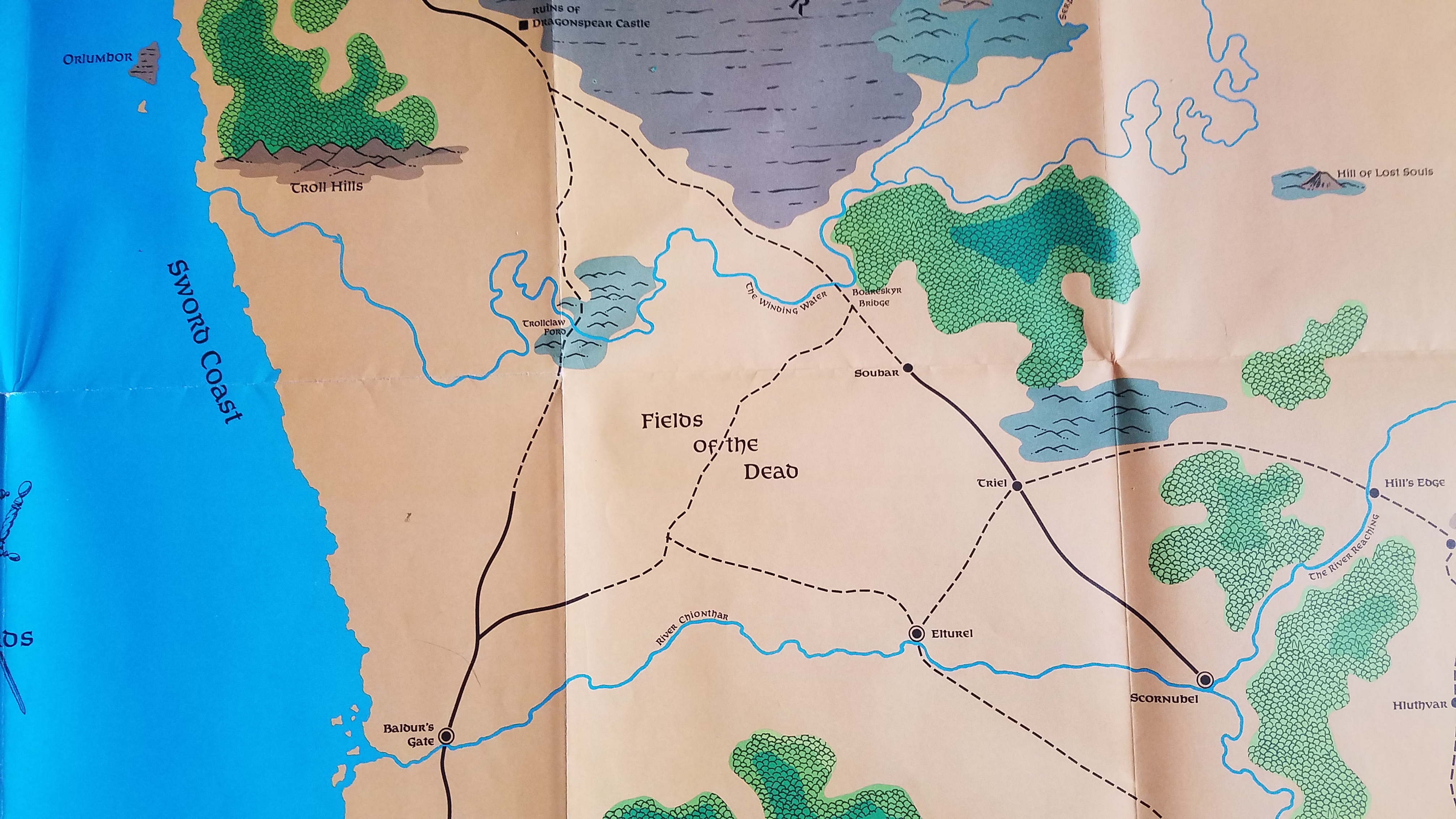
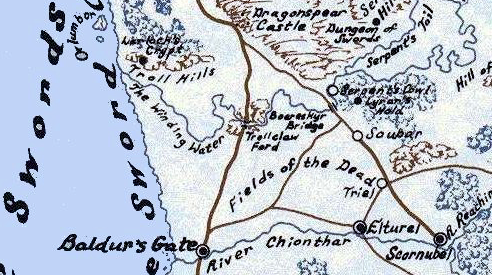
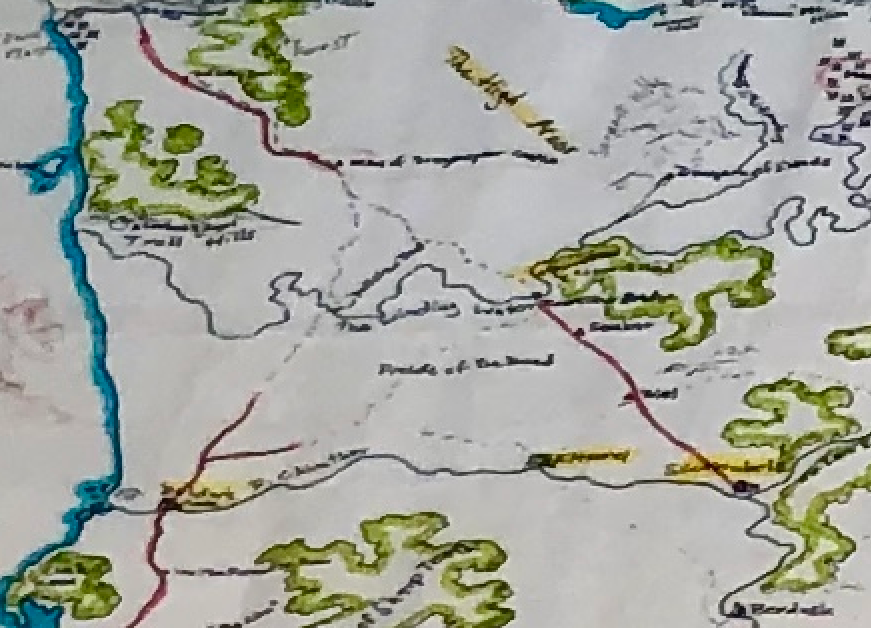
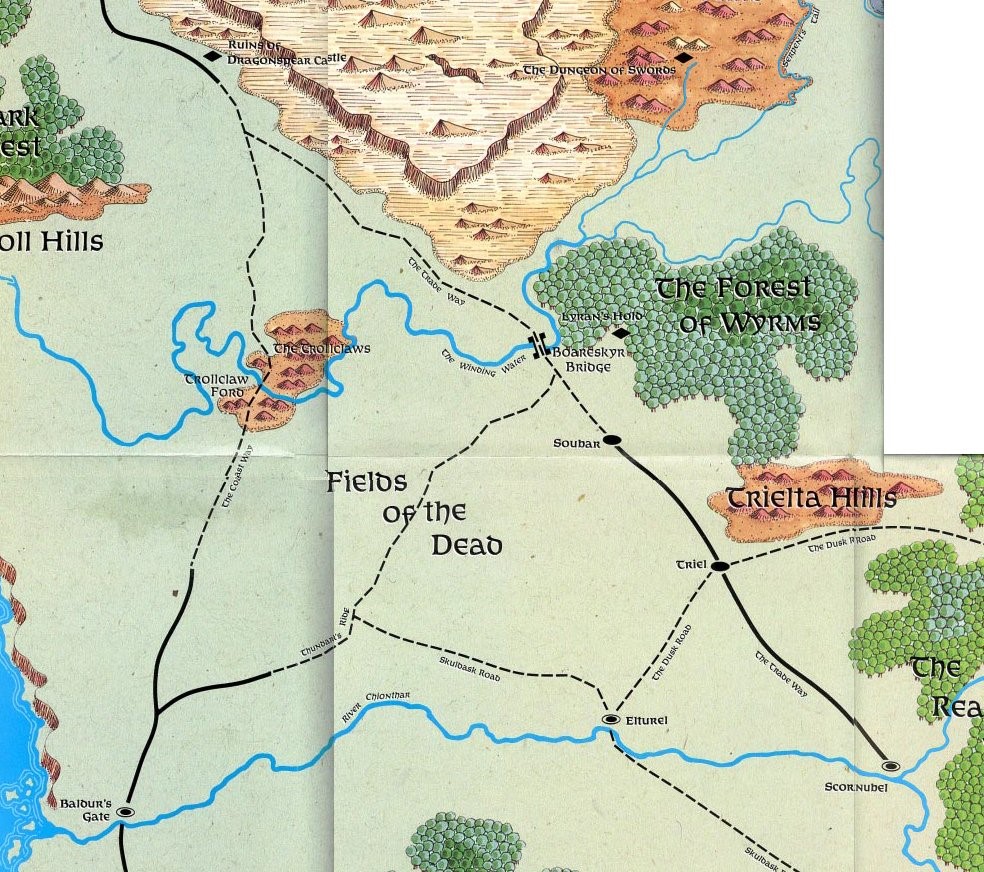
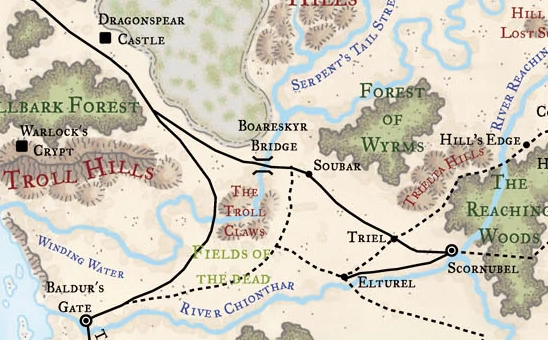
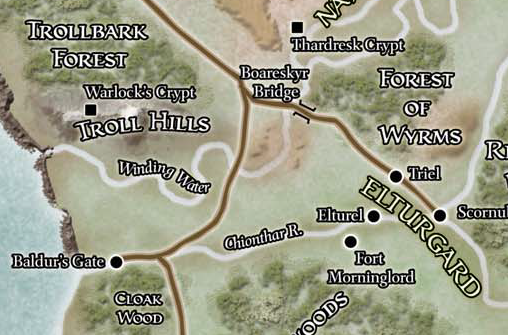
![[Elturel] has been seeking ways to unseat Scornubel as the major trading town on the Trade Way between Waterdeep and Iriaebor.](https://www.thealexandrian.net/images/20200417i.png)
